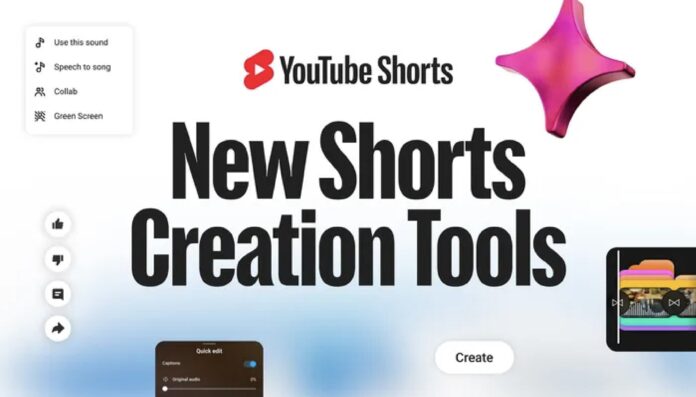YouTube has introduced a set of new artificial intelligence features for video production to better compete with rivals like TikTok in the short-form content platform market.
The new tools will initially be available in the US, the UK, Canada, Australia and New Zealand. YouTube hinted at plans to expand its rollout to more markets soon.
The new features were revealed at the Made On YouTube event on Tuesday (September 16), where the platform also revealed that it has paid out $100 billion to creators, artists, and media companies over the past four years.
Google-owned YouTube also rolled out a Speech to Song tool that converts dialogue from existing videos into musical soundtracks using Google DeepMind’s Lyria 2 music model. This allows creators to remix memorable phrases or quotes into audio tracks for new content.
YouTube said in a blog post Tuesday (September 16): “As the world’s largest creative playground, YouTube is where trends are born and where you can draw inspiration from. Imagine hearing a line of dialogue that sparks an idea — a funny phrase, a memorable quote, or a one-of-a-kind sound—and you want to remix it into a new sound.
“With our new Speech to Song remixing tool, you’ll be able to do just that, quickly turning the dialogue from eligible videos into catchy soundtracks for your next Short.”
“With our new Speech to Song remixing tool, you’ll be able to do just that, quickly turning the dialogue from eligible videos into catchy soundtracks for your next Short.”
YouTube
Users can customize the musical style with options including “chill,” “danceable,” or “fun” while maintaining attribution to original creators. The tool specifically targets “Get Ready With Me” videos and similar content formats that drive engagement on the platform.
YouTube explained: “As always and across these features, we use SynthID watermarks and content labels to indicate that these creations were generated with AI.”
The new features also include the ability for users to edit YouTube Shorts with text prompts, banking on YouTube’s partnership with Google DeepMind’s Veo 3 video generation model. The technology produces 480p resolution content for mobile creation and viewing.
YouTube introduced Edit with AI, a feature that automatically assembles raw camera footage into initial video drafts. The tool selects highlights from camera roll content, adds music and transitions, and can generate voiceovers in English or Hindi that respond to video content.
“We’re experimenting now with Edit with AI on Shorts and in the YouTube Create app, and will expand the feature in the coming weeks in select markets.”
The platform also introduced additional capabilities currently in experimental phases, including motion transfer that applies movement patterns from one video to another, allowing creators to copy dance or sports moves from one subject to another.
“We’re experimenting now with Edit with AI on Shorts and in the YouTube Create app, and will expand the feature in the coming weeks in select markets.”
YouTube
Style transformation features will allow users to apply visual styles like pop art or origami to existing footage, while object insertion tools allow creators to add characters, props or effects through text descriptions.
The new features arrive as YouTube continues to integrate AI into its services. In 2023, YouTube partnered with Universal Music Group to develop AI music tools that will “include appropriate protections and unlock opportunities for music partners.”
Earlier this year, YouTube rolled out a feature that allows creators to instantaneously generate custom (and copyright-free) instrumental backing tracks through AI. The update to YouTube’s Creator Music marketplace enables video creators to produce AI-generated music via text prompts.
The update also comes as YouTube introduces new ways to support its creator economy. Less than a month ago, YouTube expanded its “Hype” feature to 39 countries, including the US, UK, Japan, South Korea, Indonesia and India. The feature, announced last year, allows viewers to promote videos from creators with fewer than 500,000 subscribers by awarding points to help their videos land on leaderboards.
YouTube’s parent company Alphabet reported a 10.3% YoY increase in YouTube ad revenues in Q1 2025 to $8.93 billion. That growth was “driven by direct response advertising, followed by brand,” Alphabet and Google SVP and CFO Anat Ashkenazi said on the company’s earnings call.
Music Business Worldwide


